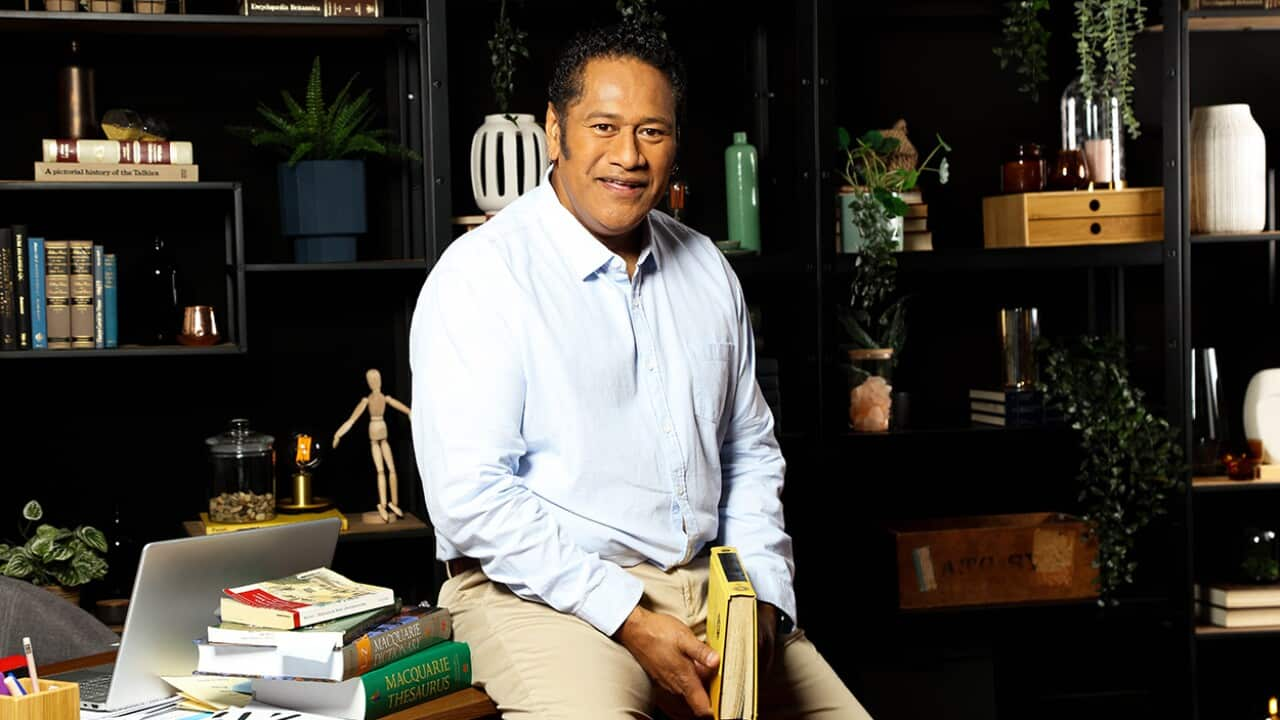We certainly do like our dystopian speculative fiction here at SBS, don’t we? Where else can you catch up with the misogynistic madness of Gilead before watching cyborg dogs hunt down the last ragged remnants of humanity with an evening double feature of and ?
You might think we’d be keen for something a little more uplifting in our televisual diet, given that we’re 18 months into a global pandemic, with all the attendant death, disruption and economic catastrophe that entails, but it’s not so: bleak shows about bleak futures are so hot right now. Why? Because, despite their dark subject matter, they have a lot to teach us about hope.
It’s the end of the world as we know it

Gabriel Byrne as Bill in ‘War of the Worlds’ Source: SBS
Afterwards, the scattered survivors, including Gabriel Byrne’s scientist, Bill; Bayo Gbadamosi’s refugee, Kariem; Daisy Edgar-Jones’ traumatised teen, Emily; and more are left to contend with a bleak world of horrors, of which the dog-shaped alien combat drones hunting them down was only the most iconic. While the mysterious invaders are killing pregnant women to harvest their babies, human survivors are proving just as capable of evil. There’s even a Nick Cave tune on the soundtrack – it’s a grim scene all around.
But the series marches on. Indeed, we’re just getting into the second season now, as the human resistance gets up to speed and our heroes start to unravel the mystery of the invasion and the nature of the aliens – which almost certainly has something to do with Emily’s unusual tattoo and seemingly psychic connection to the largely unseen enemy. For all its horrors, War of the Worlds takes pains to direct our attention to a light at the end of the tunnel.
Nihilistic art is rarer than you think

Emily (Daisy Edgar-Jones) in ‘War of the Worlds’ Source: SBS
But most stories run on hope, even brutal slogs like War of the Worlds and The Handmaid’s Tale. Indeed, it’s key to our engagement as viewers; no matter how harrowing the horrors, we want to see how (or if – there’s always attrition) our characters are going to get out of this one – even if “this one” is the extermination of the human race or the rise of a theocratic police state. War of the Worlds plays into this with its “mystery box” plotting: it’s driving us to seek answers, to postulate on possible futures for the characters and their world, to imagine some kind of happy – or at least happier – ending and how we could get there.
It’s possible, of course, that Overman could pull the rug out from under us and have the closing credits of the final episode role over the blasted and human-free world, but the possibility of such a fate makes the notion of hope even more vital. It’s the contrast between horror and hope that makes such series work.
Life lessons in the apocalypse

There is hope in ‘War of the Worlds’ Source: SBS
You could make the argument that watching Bill and the gang grind their way through a literal apocalypse makes our own current worries seem small by comparison, but that negates the very real issues and traumas that people are currently wrestling with in the Time of Covid. Really, what such works do is teach us, through the heightened language of genre, the importance of hope in the face of adversity. Recall Bill’s intellectual strength as he methodically takes apart a fallen dog-bot to see what makes it tick, or Emily and Kariem finding love in the face of almost certain oblivion.
The lesson is not “it could be worse” but rather “we can be stronger”, no matter what adversity is thrown at us. Not only can we see our own lives reflected in these apocalyptic scenarios, but we can see a pathway through the horror, and some kind of future waiting for us to find it on the other side.
Season 2 episodes of War of the Worlds air on SBS at 9.30pm Wednesday nights, with episodes landing after going to air. Start streaming now with season 1:
Or jump straight to season 2:
More from The Guide

‘War of the Worlds’: five burning questions about season 2












